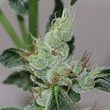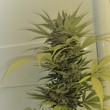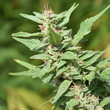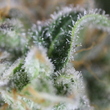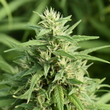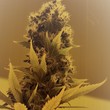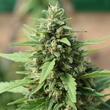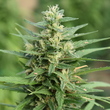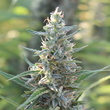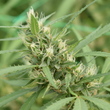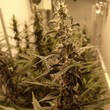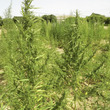Introducción
Phytoplant Research obtained from the Community Plant Variety Office (CPVO) the protection of plant breeder’s rights for the dioecious female cultivar ‘Divina’ characterized by a stable variegated foliage of vegetatively propagated plants. ‘Divina’ has a distinctive “mottled yellow and green leaf” phenotype from the cultivar ‘Pilar’ where the mutated type of chimera was detected and isolated from a mutated donor greenhouse growing plant. The use of distinct characters such as variegated foliage could be used as a recognizable morphological marker to differentiate the plant from its psychotropic relative and could be an impulse for the commercialization of ornamental Cannabis cultivars.
The main objective of this article was to detect differences and to correlate growth parameters between the mutated cultivar ‘Divina’ and the not mutated cultivar ‘Pilar’. Additional objectives were to develop best practices for the successful in vivo rooting of cuttings and in vitro micropropagation. We were also interested in determining the genetic inheritance and sexual transmission of the trait leaf variegation to other Cannabis genetic resources for ensuring proper intellectual property management of the cultivar ‘Divina’ and of other still unprotected ornamental cultivars.
Materiales y métodos
Were extracted DNA by using the DNeasy Plant Mini Kit from Qiagen of three leaf and sent to the Center for Research in Agricultural Genomics (CRAG), which is a public consortium formed by various Spanish institutions (CSIC, IRTA, UAB and UB) in Barcelona. The set of 15 SSRs and the molecular marker for Δ9-THCA/CBDA synthases were developed and carried out by researchers at CRAG. After confirming the good quality of the nuclear DNA samples, PCR amplification of fluorently labelled 15 SSR markers was performed, followed by separation and detection of SSRs using an automatic ABI Prism® 3130xl (Applied Biosystems) sequencer. Genetic analysis was performed with the software GeneMapper® Version 4.0 (Applied Biosystems). Two different microscopic techniques were used for detecting extracellular differences and intracellular variability between leaf samples.
A comparative rooting trial was performed by taking 180 cuttings from elite stock plants of each cultivar ‘Pilar’ and ‘Divina’. Cuttings were placed in Jiffy cubes disposed in propagation greenhouses during the in vivo rooting stage. With specific climatic conditions controlled.
A generic protocol for all the stages of in vitro micropropagation already established at our laboratories for axillary shoots of ‘Pilar’ was also tested for performing the in vitro micropropagation of shoots of ‘Divina’.
Resultados
By using the molecular marker system developed at CRAG we have been previously able to distinguish several Cannabis genetic resources included in CRAG database, ranging from unprotected to protected cultivars, both sexually propagated monoecious and dioecious cultivars as well as asexually propagated dioecious female cultivars (data not shown). The lack of genetic differences in base pairs of the alleles detected, especially between samples of “Pilar not mottled green leaf” and “Divina not mottled yellow leaf”, were evidence that the spontaneous genetic mutation resulting in plant tissues devoid of chlorophyll cannot be detected by the 15 SSR markers.
Binocular microscope observations of “yellow” portions of stalks, leaves and inflorescence bracts of ‘Divina’ confirmed the presence of bulbous, sessile- and capitate-stalked trichomes in “yellow” portions of stalks and inflorescence bracts, as well as in both upper and lower surface of leaf discs, with a higher concentration of glandular trichomes in the upper surface. In some samples of leaf discs of ‘Divina’, especially in the “yellow” portions of upper surface of leaf discs, we have observed anthocyanins accumulation.
Conclusión
Although no differences were detected at genotypical level between ‘Divina’ and ‘Pilar’ by adopting specific molecular markers, evident differences can be detected at phenotypical level, especially when “green cell” and “yellow cell” are examined in more details. Propagation of true to type variegated ‘Divina’ rooted cuttings can be performed satisfactorily by adopting good in vivo and in vitro propagation practices.
Otras publicaciones
Ver más
Ver más
Ver más
Ver más
Ver más
Ver más
Ver más
Ver más
Ver más
Ver más
Ver más
Ver más
Ver más
Ver más
Ver más
Ver más
Ver más
Ver más
Ver más
Ver más
Ver más
Ver más
Ver más
Solicita información
¿Te podemos ser de ayuda? ¿Tienes alguna duda sobre nosotros? Escríbenos y contactaremos contigo cuanto antes.
